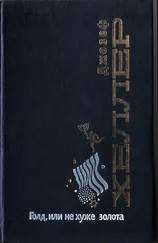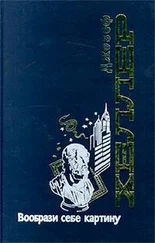He took a long pull at the Guinness and heaved a deep sigh of thanks. As much as he missed them, at least Kathy and Sissy were safely out of it.
* * *
“We told you before, Pace, don’t press your luck. You think we’re stupid, right? Believe me, we ain’t. No more warnings. Or maybe you’d like us to mess up your girlfriend or your daughter next time. Don’t make any difference to us. We know where they both are. We can get them any time.”
Pace found the message when he went into the bedroom to undress for a shower and saw the red light blinking on his recorder. He put the machine on playback, hoping the message was from Kathy. It never crossed his mind that it could be something he should preserve so he was in the bathroom when the message began. The voice was not the same as on the first warning, the one he found when he came home from the hospital. When he realized what the caller was saying, he ran for the machine to stop it from respooling. He didn’t make it in time.
Damn! Damn! Damn!
Frantically, Pace dialed Kathy’s number on O Street, more concerned for her safety than for the evidence he’d lost. Just when he was sure she was safely away from him… there was no getting away from him. He let the phone ring seven times. There was no answer.
He called Hugh Green’s office. Again no answer.
Furiously, he thumbed through his address book for the number of D.C. Detective Martin Lanier. He’d left for the day.
“Please,” Pace urged the desk sergeant, “call him at home or in his car and tell him it’s an emergency. Tell him it’s Steven Pace from the Chronicle, and I need to talk to him right away.”
The sergeant, in a tone that said he took desperate calls all the time, promised to try.
* * *
When the phone finally rang, it jarred Pace out of a troubled half sleep on his living-room sofa. He snatched up the receiver.
“Pace, that you? This is Lanier. I got your message a few minutes ago. What’s going down?” Pace told him. “I’m on my way,” Lanier said.
* * *
He answered the call Code Two, lights flashing, no siren. Other drivers still gave way, and he didn’t make citizens angry by waking them up without cause. And Martin Lanier was fairly certain this run was without cause.
In his years on the force, he had seen his share of obsessed people: crack-heads crazy to smoke a pipe of crystal cocaine, paranoids absolutely convinced they were being stalked by werewolves or space aliens, a man in Southwest who spent six weeks hunting down the thug who slashed his wife and finally blew the junkie’s head off with a shotgun while the street cops, Lanier was convinced, looked the other way. He knew how to deal with those. They were textbook. But the manual didn’t give guidance on how to handle nutball journalists. That razor-cut, computerized Virginia state cop, Helm, he believed Pace. But not Lanier. The pieces didn’t add up for him.
The detective pulled up in front of Pace’s apartment and double-parked. He glanced at the clock in the dash. It was already Tuesday morning. He’d been at work more than fourteen hours.
“You better have something more than fantasy for me, Pace,” he whispered into the empty car. “I’ve had about all of you I can stand.”
Tuesday, May 6th, 9:30 A.M.
Lanier found Pace’s story unconvincing.
His next step was up to Pace’s supervisors. Never having been much for channels, Lanier called Avery Schaeffer to set up a private meeting. He had an afternoon call to make in northwest Washington and asked the editor to meet him at the National Cathedral.
“You know the Bishop’s Garden?”
“Of course,” Schaeffer replied.
“Okay, 12:30,” Lanier said.
* * *
Schaeffer drove north on Massachusetts Avenue, up the grade to the top of what was called Mount St. Alban in the late nineteenth and early twentieth centuries, when the high ground overlooking the federal city was a fashionable retreat for wealthy residents seeking relief from Washington’s oppressive summer heat.
President Grover Cleveland had actually established a summer White House up here in—Schaeffer frowned, trying to retrieve that bit of trivia from his memory—1886 maybe. That old building was gone now, but the President left his mark on the area. It was called Cleveland Park and became one of the best residential areas of the District of Columbia. Many of the houses were built in the nineteen-twenties and were much favored by wealthy lawyers and high-level government officials, who spent lavish amounts of money restoring and upgrading the old residences. Schaeffer thought President Cleveland would conclude Americans had gone mad if he returned today and learned how many millions of dollars those homes were worth.
Schaeffer found a place to park on Newark Street and walked three blocks south to the National Cathedral grounds. The cathedral was an awesome gothic building, and standing atop Mount St. Alban, it was visible from almost anywhere in the District of Columbia and from some areas of suburban Maryland and Virginia. Its foundation stone was laid in 1907. Its official name was the Cathedral Church of St. Peter and St. Paul. But no one called it that.
Schaeffer followed the stone walkways to the Bishop’s Garden. Lanier was waiting. “Mr. Schaeffer, thanks for coming. I’m sorry to be so mysterious.”
Seeing Lanier brought back difficult memories. “We never meet under very pleasant circumstances,” Schaeffer said.
“Lot of people feel that way about cops. Some days we feel that way about ourselves.”
Schaeffer realized they hadn’t shaken hands. He thought about rectifying that but dropped the idea as awkward. “So what’s on your mind?” he asked instead.
“Steve Pace,” Lanier replied directly. He repeated the story of the night before and with it, his conviction that Pace was not telling the truth about what was happening to him. If Pace persisted in disrupting police business with this obsession of his, there would be charges.
Schaeffer listened to the story without interruption. The diffident way he asked the first of his two questions belied the tension he felt.
“Had he been drinking?”
“You mean, was he drunk? No, not that I could tell. I don’t know if he’d maybe had a beer or two, but he was in complete control.”
“Are you certain Pace’s statement is false?”
“I’ve asked myself that question a hundred times, Mr. Schaeffer,” the detective said. “I’m as certain as I can be. There’s no evidence there were any threatening messages on his answering machine. He admits he doesn’t have a witness who heard either of them. There’s no evidence at all that this blasted blue van even exists.”
“Oh, yes there is,” Schaeffer corrected. “Several rescue workers at the scene of the automobile accident in Virginia reported seeing it there. As I recall, it was also seen around the drugstore where Mike McGill was killed.”
“Correct, but in both cases, eyewitnesses reported seeing a blue van with a dented right front. No details. No license number. Not even a vague idea which state’s plates it carried. In short, nothing to corroborate that it was the same vehicle. And to repeat the question my superiors keep asking me: You have any idea how many beat-up blue vans exist in the greater Washington area?”
“I know,” Schaeffer agreed. “But it’s the thread of consistency that gives Pace’s story some credibility.”
“I think it’s the thread Pace grabbed and embellished for the sake of his credibility. He added it to the story of his beating, and now he’s seeing it everywhere. But only when he’s alone.” Lanier took a deep breath and let it out slowly between ballooned checks. “I think the bottom line here is: Your boy needs professional help of a sort neither of us is qualified to give. I think when someone pulls hard on that thread running through his story, the entire fabric will unravel, and he could unravel with it.”
Читать дальше










